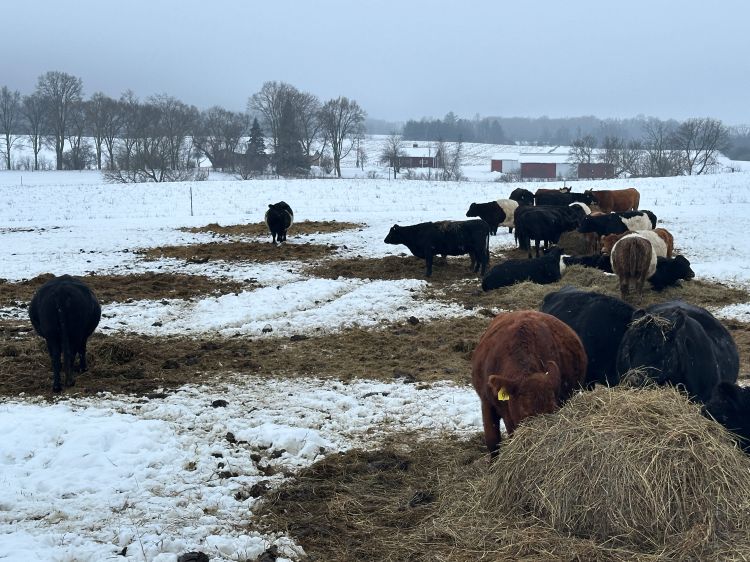New MSU Extension bulletin, Winter Bale Grazing in Michigan and the Great Lakes Region now available
New resource helps livestock producers cut costs, improve soil health, and simplify winter feeding.

MSU Extension has recently released a brand-new MSU Extension bulletin, Winter Bale Grazing in Michigan and the Great Lakes Region, which provides practical step-by-step guidance for farmers seeking more efficient and regenerative winter-feeding methods. The publication outlines how bale grazing works, equipment needs, benefits and drawbacks, and offers clear guidelines to help producers reduce input costs, strengthen resilience, and build healthier soils across the Great Lakes region.
This publication was developed by Michigan State University Extension educators Kable Thurlow and Frank Wardynski, along with contributions from retired MSU Extension educator Gerald Lindquist and former educator Michelle Sweeten.
You will find this bulletin useful if your farm is looking for ways to reduce input costs such as fertilizer, fuel, equipment and labor or boost soil health. Some farmers have used bale grazing to reduce travel on muddy fields and pathways during times of soil saturation. This bulletin provides a roadmap with clear directions on changing winter-feeding methods. The bulletin gives practical guidance on bale grazing, a different way to feed beef cattle during late fall and winter. It’s written to be useful and easy to follow.
What is bale grazing?
Bale grazing is a well-thought-out process of placing feed out, typically dry round bales of hay in a field or pasture. Livestock are then given access to a few bales at a time by moving a temporary electric fencing in a pattern similar to that used in strip or rotational grazing. The hay can be set out at one time or periodically throughout the winter.
The bulletin also covers:
- How bale grazing works
- What equipment will be needed
- The benefits and drawbacks of bale grazing
- Easy to follow winter bale grazing guidelines
It was written for is beef cattle producers; however, the methods explained can also work for dry dairy cows, sheep, goats, horses and llamas. It also takes into consideration the Michigan TB zones and requirements of excluding wildlife. The bulletin also contains an example calculating the amount of hay that your herd will require and considers the added “waste” that you will experience when using this feeding method.
The launch of this bulletin is timely. Bale grazing supports more efficient, regenerative and resilient practices. It also helps to cut down on equipment costs, reduces winter feeding labor requirements, spreads fertility where it’s needed most, and boosts soil health.
The Winter Bale Grazing in Michigan and the Great Lakes Region bulletin is now available. We encourage you to read it, share it, and consider trying bale grazing on your farm or ranch. Together, we can shape a better future for farming and the land we steward.



 Print
Print Email
Email



